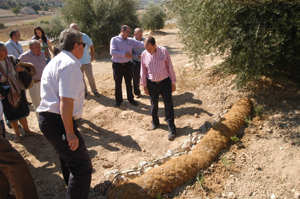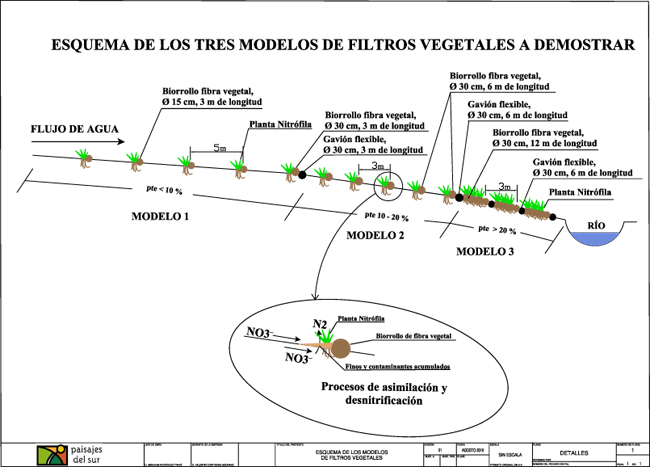Otros eventos
Under the 2010 call by the financial instrument for the environment LIFE+, the Granada Provincial Council presented the EUTROMED project (“Demonstrative technique for the prevention of eutrophication caused by agricultural nitrogen in surface waters in the Mediterranean climate zone”), the co-funding of which has been approved by the European Commission.

This project is led by the aforementioned provincial institution, but also includes the participation of the University of Granada and the Granada-based companies Bonterra Ibérica SL and Paisajes del Sur SL, as associated beneficiaries. The Regional Government of Andalusia Department of the Environment contributes as co-funder.
The project will be carried out between 1st September 2011 and 1st October 2014. Its ultimate objective is to keep the environment pollutant-free, preventing waters from carrying fertilisers into our rivers and lakes, causing their eutrophication.

Access to the Appointed Representative for the Environment’s presentation
The technology to be used in this project is based on the introduction of plant fibre-based systems (Biorolls) into the land that break the lines of water run-off, acting as a filter, retaining the nitrates and much of the solids that are dragged along, thus largely preventing the recipient waters from getting polluted and minimising the processes of erosion and the loss of fertile soil.
These filters are also useful for seeds or plants, which use these structures as both a support mechanism and substrate. In this way, the biorolls are fixed into the earth, forming a stable, ecological and biodegradable system that will end up forming part of the land itself.
To accelerate the development of vegetation and to improve their effectiveness, the biorolls can be revegetated with native nitrophilous plants and many secondary roots that can fix the land in place and assimilate the nitrogen they have retained, contributing to greater performance.
In parallel, the cost-efficiency of this technology and the different models raised is calculated, as well as demonstrating their different environmental and economic benefits.


This system can eliminate nitrates through three different mechanisms:
– Growth of nitrophilous vegetation both naturally and by crops.
– Development of denitrifying bacteria associated with plant roots.
– Retention in the sediment filters where those compounds have previously been fixed.
According to recent studies, the same type of filters as those proposed in this project can eliminate an average of up to 50% of the nutrients dissolved in run-off water
The chosen methodology establishes a total of 20 sample points in the microbasins treated with filters, as well as 2 witness points to carry out the relevant comparisons.
Depending on the slope of the land and the depth of the gully, different sized filters are placed in parallel at different distances and combined (or not) with flexible gabions. A range of nitrophilous plant species are planted in the filters, choosing the most suitable to the nature of the environment in question.

Se seleccionarán varias parcelas agrícolas próximas y homogéneas en cuanto a la pendiente, cultivo, prácticas agrarias, estado de la cubierta vegetal y erosión del suelo. En varias de ellas se instalará la tecnología descrita anteriormente, sirviendo al menos una como parcela testigo. Se intervendrá en 5 ha efectivas, es decir, 5 ha de cárcavas y barrancos en los que se instalará la tecnología, que influirán sobre una superficie total de 250 ha.
En función de la pendiente del terreno y de la profundidad de la cárcava, se aplicarán filtros vegetales de distintas dimensiones, a diferentes distancias y combinados o no con gaviones flexibles. En los filtros se llevará a cabo la siembra de distintas especies vegetales nitrófilas, eligiendo las más adecuadas en función de las características del terreno (pendiente, tipo de suelo, humedad y salinidad del suelo).












